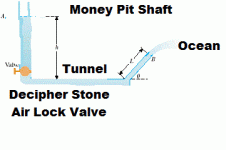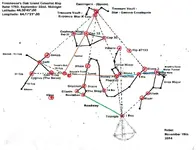lokiblossom
Bronze Member
- Joined
- Dec 4, 2014
- Messages
- 1,865
- Reaction score
- 1,310
- Golden Thread
- 0
- Location
- Traverse City, Mi.
- Primary Interest:
- Relic Hunting
Hi Loki
You say this with such utter conviction, I'm sure you'll convince a lot of people! Were this true, dendrochronology with respect to correcting carbon dating would not work!! A 2,000 year-old tree has 2,000 living rings? Yeah, right! It was a good try!!!!!
I've heard of the date range, and don't doubt those were the results, but I don't know how accurate they are. Could you possibly provide the authority, or academic paper, on the effect of sea water?
You have an advantage over me. I don't know what 100-year-old coconut fibre looks like. Oops, hold on, having said that, if you're right, then I do. I happen to have in front of me a swatch of fibre from Oak Island, provided by Reginald V. Harris, which could be 800 years old! It looks in absolutely great condition! I'd use it for packing if I had more of it. I truly did think of having it tested, but I'd need a better evidence trail, and it's costly.
East Indiamen sailing vessels came into western seas through the Indian Ocean. Their cargoes could have been packed with coconut fibre.
I've heard about that, and I truly wish you success in seeing this through to completion.
I said I wouldn't make a song and dance about the topic, so I'll leave you to your views, and wish you well with any subsequent discussion.
I stand corrected, I did not realize that the heartwood of an older tree was considered dead. I was not trying to fool anybody and thanks to you I have spent last evening reading about trees. But, more importantly it does not affect the dating of the coconut fibre, which was at least once completed by Beta Analytic. I had a chance to get some of the fibre from the museum to be tested but didn't follow through. There was also a test done by the current owners of which I have not seen the paper work on, and possibly one much earlier.
You say East Indiamen came into western seas before the 1500's?
I do know that Templars traded in the Eastern Mediterranean with countries that also traded with India in the late 13th and into the 14th century.
Cheers, Loki










